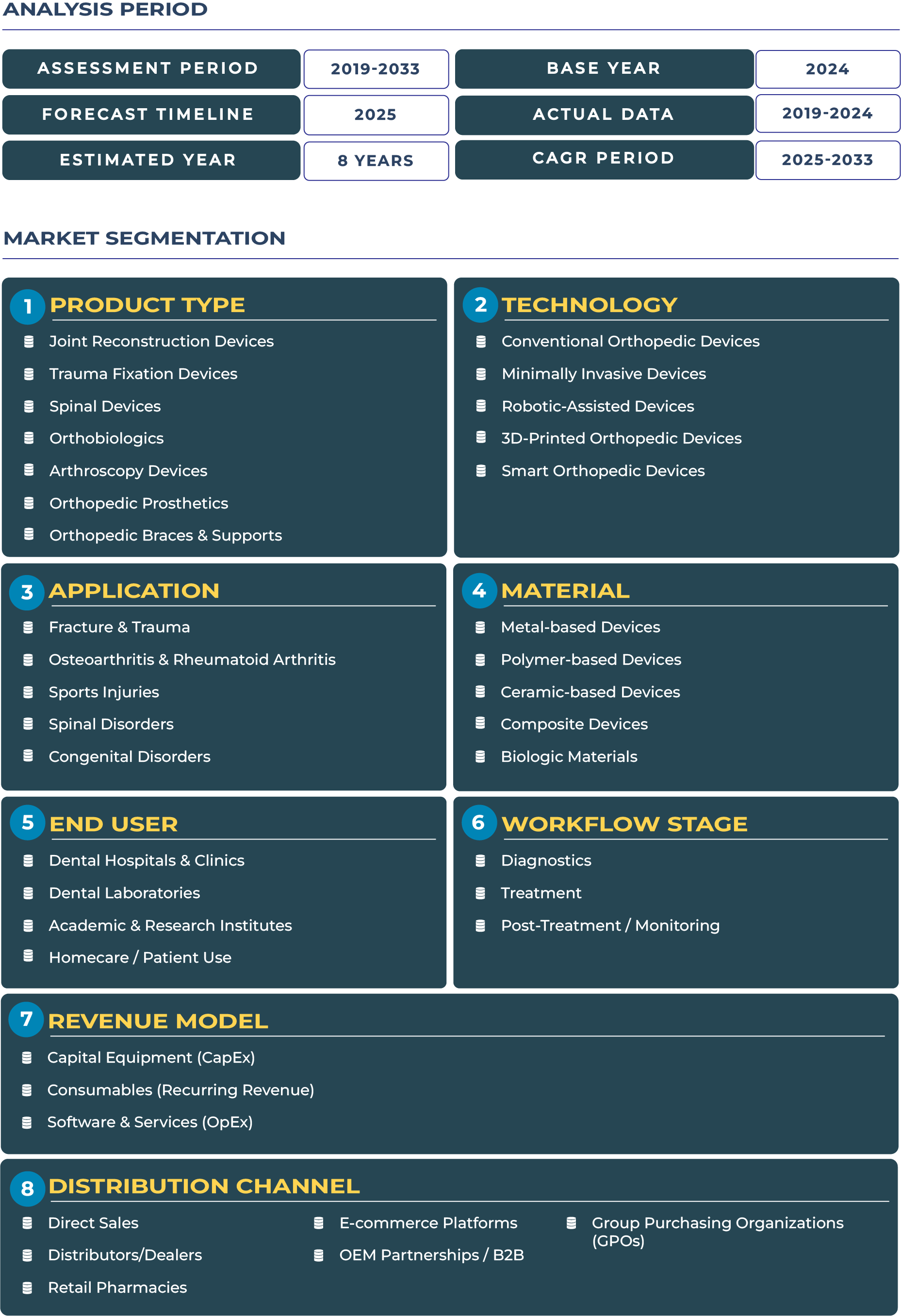Italy Orthopedic Devices Market Outlook: Aging Population Fuels Orthopedic Device Growth in Italy
Italy’s demographic landscape is one of the most aged in Europe, with over 23% of the population aged 65 and above. This creates a unique healthcare challenge and a substantial opportunity for the orthopedic devices industry. The rising incidence of age-related musculoskeletal disorders, fractures, and degenerative conditions is sharply increasing demand for implants and advanced treatment options. As a result, the orthopedic devices sector in Italy is strategically positioned at the intersection of demographic-driven demand and evolving medical infrastructure. From joint reconstruction implants supporting mobility in elderly patients to trauma fixation devices aiding accident recovery, Italy’s orthopedic devices ecosystem is evolving rapidly to meet the complex needs of its population.
The Italy orthopedic devices market is entering a strong growth phase, driven primarily by demographic realities and a diversified healthcare system. By 2025, the market is projected to reach USD 1.86 million, with forecasts indicating an expansion to USD 2.67 billion by 2033, growing at a CAGR of 4.6% (2025–2033). This growth trajectory is supported by Italy’s aging population, rising surgical procedure volumes, and the availability of specialized orthopedic clinics. In northern regions such as Lombardy and Emilia-Romagna, private healthcare networks and advanced hospitals are fueling rapid adoption of prosthetics and spinal solutions. Meanwhile, central and southern regions are witnessing steady improvements through government-funded initiatives and orthopedic tourism, especially in areas like Rome and Naples. Despite broader geopolitical and economic challenges in Europe, Italy’s orthopedic devices industry continues to demonstrate resilience, supported by a mix of private investment, regional pilot programs, and international collaborations.
Growth Drivers and Market Restraints in Italy Orthopedic Devices Ecosystem
Several structural and healthcare-specific drivers are accelerating growth in Italy Orthopedic Devices industry. The aging population remains the most significant factor, generating sustained demand for joint reconstruction and arthroscopy solutions. Northern Italy, home to some of Europe’s largest private clinic networks, is creating substantial opportunities for advanced orthopedic devices, while the country’s sports medicine sector also contributes significantly to demand through trauma fixation and biologic implants. Moreover, orthopedic tourism—where international patients seek cost-competitive but high-quality treatments in Italy—is emerging as an additional driver, particularly in specialized orthopedic hospitals.
However, the market also faces notable restraints. Procurement processes remain fragmented due to regional healthcare administrations (ASL), often resulting in inconsistent device adoption across the country. Public hospital budgets, particularly in southern Italy, limit the ability of facilities to adopt premium implants or invest in advanced surgical infrastructure. Moreover, supply chain delays and procurement inefficiencies—partially exacerbated by global disruptions—continue to challenge device availability and rollout. These dynamics reflect a two-speed orthopedic devices sector: advanced uptake in northern regions, contrasted with financial and structural hurdles in the south.
Emerging Trends and Opportunities Shaping Italy Orthopedic Devices Market
The Italian orthopedic devices market is evolving through several notable trends. Private hospital investments in northern regions are accelerating demand for premium implants and minimally invasive arthroscopy devices. Ambulatory care is gaining traction across urban centers such as Milan and Turin, with outpatient orthopedic procedures becoming increasingly common. Regional consolidation, where hospital groups pool resources to negotiate device procurement, is also reshaping the orthopedic devices landscape by improving economies of scale.
Opportunities are emerging in both regional and national dimensions. Northern-region pilot programs for advanced biologics and spinal implants are opening pathways for manufacturers to showcase innovation. Local manufacturing partnerships with Italian biomedical firms offer an avenue for international players to navigate complex procurement and reimbursement systems more effectively. Meanwhile, in southern Italy, opportunities lie in offering flexible financing solutions for hospitals constrained by budgetary pressures, enabling broader access to trauma fixation devices and prosthetics. Collectively, these dynamics suggest that companies tailoring their strategies to Italy’s regional healthcare realities stand to benefit from significant market expansion.
Competitive Landscape: Regional Strategies and Market-Specific Developments
The competitive environment of the Italian orthopedic devices industry features a mix of global leaders and strong domestic players. International companies such as Zimmer Biomet remain central to joint reconstruction and spinal devices, while local Italian manufacturers contribute to niche segments such as trauma fixation and orthobiologics. Companies are increasingly pursuing strategies tailored to Italy’s fragmented market. Segmenting go-to-market approaches between the north and south enables firms to optimize resource allocation and adapt to budgetary realities. Leasing models and co-investment with local distributors are also being deployed to overcome financial barriers in underfunded regions. Recent collaborations with university hospitals in Bologna and Milan highlight the importance of clinical partnerships in reinforcing trust and accelerating adoption of new implants. These strategies underscore how adaptability, localization, and clinical integration are becoming essential competitive levers in Italy Orthopedic Devices sector.







